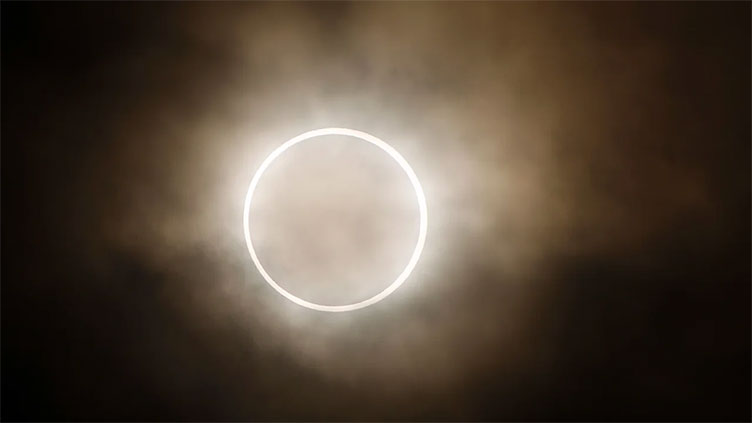A 'ring of fire' solar eclipse is coming soon. Here's what you should know

Technology
The solar eclipse will make its appearance on October 14
(Web Desk) - An annular solar eclipse will make its appearance in the skies over North, Central and South America on October 14, creating a singular spectacle for those in its path — and a rare opportunity for scientists.
The dazzling celestial event will allow millions of people to witness “the awe and the wonder of seeing a beautiful ring of fire eclipse,” said Peg Luce, acting director of the Heliophysics Division at NASA headquarters.
The “ring of fire” nickname comes from the appearance of annular solar eclipses, which are like total solar eclipses, except the moon is at the farthest point in its orbit from Earth, so they can’t completely block the sun. Instead, the sun’s fiery light surrounds the moon’s shadow, creating the so-called ring of fire.
The annular solar eclipse will begin in the United States at 9:13 a.m. PT (12:13 p.m. ET) and pass from the Oregon coast to Texas’ Gulf Coast, appearing in Oregon, Nevada, Utah, New Mexico and Texas. The lunar shadow will also be visible in parts of California, Idaho, Colorado and Arizona. The eclipse will end in the US at 12:03 p.m. CT (1:03 p.m. ET).
After leaving the US, the eclipse will cross Mexico, Belize, Honduras, Panama and Colombia before ending off South America’s Atlantic coast at Natal, Brazil.
Weather permitting, a cresecent-shaped partial solar eclipse, where only part of the sun is covered by the moon, will be visible October 14 in all 49 continental US states, including Alaska, according to NASA. Use the agency’s interactive eclipse map to check when the eclipse will pass over your area.
Unable to see the eclipse? NASA will share a live stream beginning at 11:30 a.m. ET on eclipse day, sharing views from Albuquerque, New Mexico, Kirbyville, Texas, and White Sands, New Mexico, according to Kelly Korreck, eclipse program manager at NASA.
“The next annular eclipse seen in this part of the country is actually going to be in 2046,” Korreck said. “It’s going to be a long stretch before we will see this phenomenon again, so we’re really encouraging folks to go out there and observe safely.”


